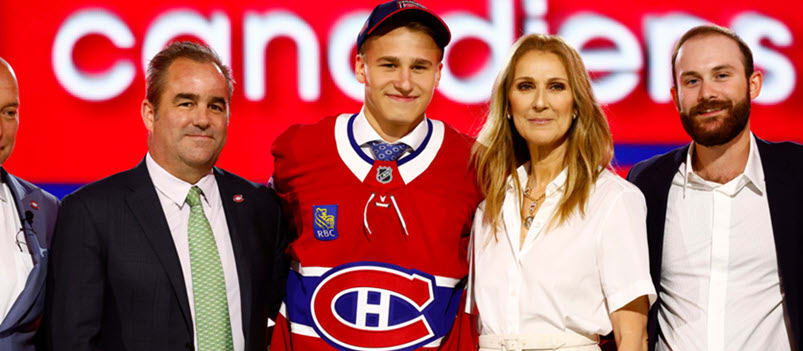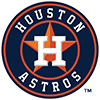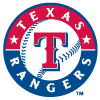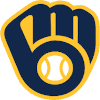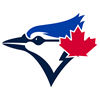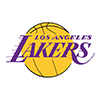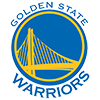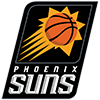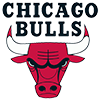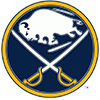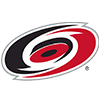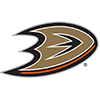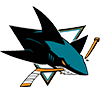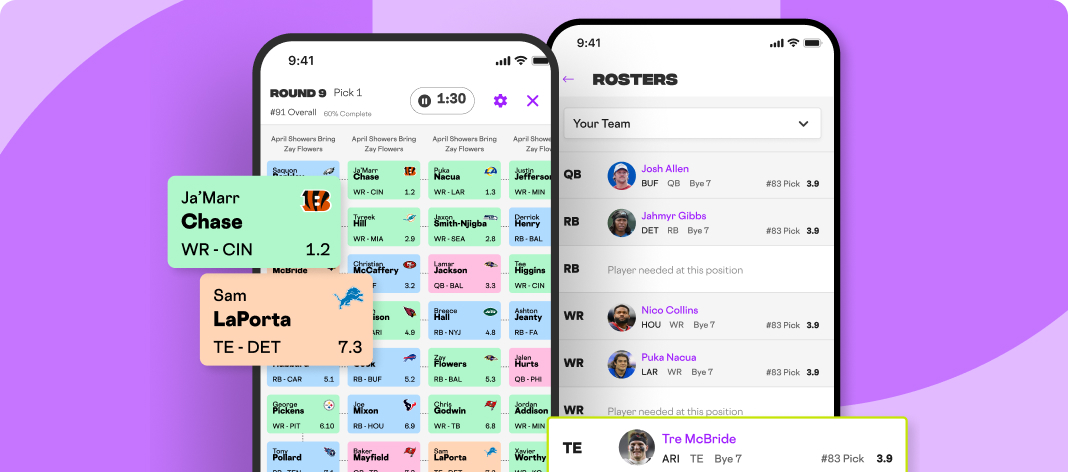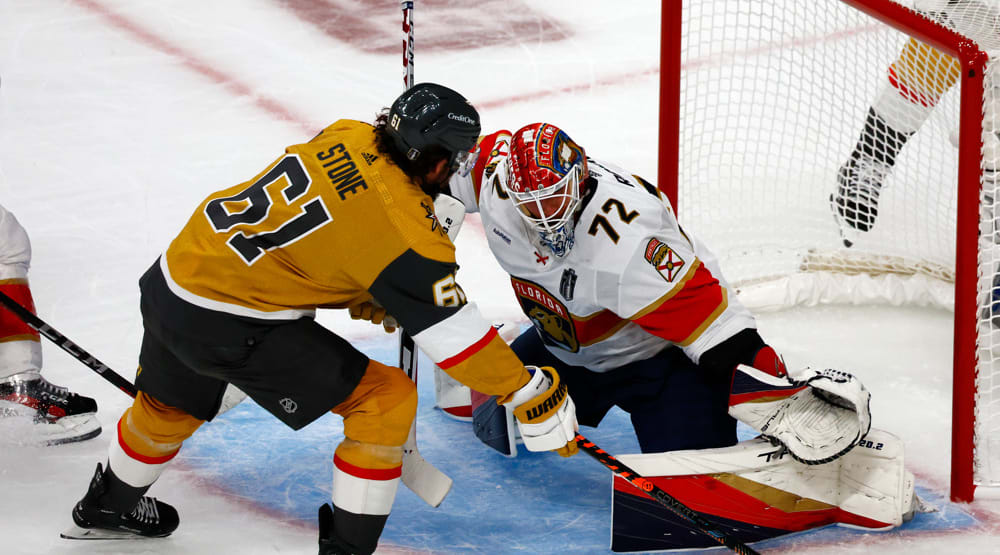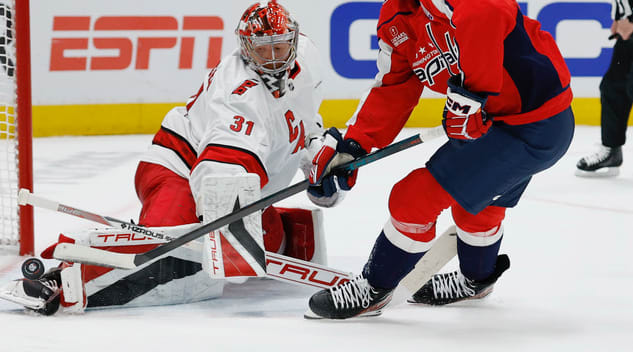Top NHL Prospects for the 2025-26 Season
This is the second of our annual two-part series detailing the top prospects in the NHL entering the 2025-26 season. A couple of quick notes before we get started.
- I considered each of the top three players for the No. 1 overall spot. I ultimately went with the guy I felt had the best chance to be a dynamic offensive weapon.
- In terms of tiers, I would rank the Top-50 as follows: 1-3, 4-10, 11-27, 28-34, 35-50
Don't forget to check out Part 1 of our NHL Prospect breakdown, as well as our College Hockey-focused prospect piece.
1- Ivan Demidov (RW, MTL): The most gifted individual offensive prospect in the game today, Demidov was a force in the KHL last season as a 19-year-old, finishing with 19 goals and 49 points in 65 games. No U-20 KHL player has put up more points than the 2024 No. 5 overall selection. The Canadiens were able to get him out of his contract earlier than expected, and he was in the lineup for the club's final two regular-season games and brief playoff run. His creativity is top notch, and I've long found Demidov's compete level to be underrated. Simply put, he's a dynamic offensive player who can potentially dominate a game in a variety of ways, and I think his ceiling is higher than any prospect in the game.
2- Matthew Schaefer (D, NYI): Schaefer has been an elite prospect for a while --
Top NHL Prospects for the 2025-26 Season
This is the second of our annual two-part series detailing the top prospects in the NHL entering the 2025-26 season. A couple of quick notes before we get started.
- I considered each of the top three players for the No. 1 overall spot. I ultimately went with the guy I felt had the best chance to be a dynamic offensive weapon.
- In terms of tiers, I would rank the Top-50 as follows: 1-3, 4-10, 11-27, 28-34, 35-50
Don't forget to check out Part 1 of our NHL Prospect breakdown, as well as our College Hockey-focused prospect piece.
1- Ivan Demidov (RW, MTL): The most gifted individual offensive prospect in the game today, Demidov was a force in the KHL last season as a 19-year-old, finishing with 19 goals and 49 points in 65 games. No U-20 KHL player has put up more points than the 2024 No. 5 overall selection. The Canadiens were able to get him out of his contract earlier than expected, and he was in the lineup for the club's final two regular-season games and brief playoff run. His creativity is top notch, and I've long found Demidov's compete level to be underrated. Simply put, he's a dynamic offensive player who can potentially dominate a game in a variety of ways, and I think his ceiling is higher than any prospect in the game.
2- Matthew Schaefer (D, NYI): Schaefer has been an elite prospect for a while -- he was the first overall pick in the 2023 OHL Draft -- but he played his way into the No. 1 spot in the NHL draft over the past year or so. The most remarkable thing of all is that he didn't play much hockey last season. Schaefer's season got off to a late start due to illness, and he then broke his collarbone after colliding with the post in Canada's second World Junior game. Part of the appeal is the fact that with an early September birthday, Schaefer made the cutoff for this year's draft by just two weeks. A do-it-all rearguard with elite skating ability and a high-end brain, Schaefer can shut down offensive advances in an instant and use his feet to lead the charge the other way. His awareness in all three zones is exceptional for a 17-year-old, and while he may not be the type to post 60-plus points annually at the NHL level, this is the type of young defensive building block every single NHL team should be targeting. I'd be floored if he doesn't spend this season in the NHL.
3- Michael Misa (C, SJ): Misa was granted exceptional status to join the OHL as a 15-year-old in 2022-23. He was good in each of his first two years in the league, but dominated last year to the tune of 62 goals and 134 points in 65 games to lead the OHL in scoring. Misa can play both center and wing, but his huge year coincided with his moving back to the middle. Misa has above-average skills across the board and has shown a real ability to make high-end plays at top speed. The effort level is strong for a kid who will be known for his offensive production. He was the best player on the board at No. 2 overall this past June and was the correct pick for San Jose despite a high-end forward not being a need for the organization.
4- Zayne Parekh (D, CGY): Parekh, a defenseman, has 66 goals and 203 points in 127 games over the course of his past two OHL campaigns. He made a well-deserved one-game cameo for the Flames late last season and scored his first NHL goal. The offensive ability, as the numbers would lead you to believe, is elite. He reads plays so well that sometimes you see him jumping into the rush and mistake him for a forward. Parekh's shot is both hard and accurate. He's never going to be the type to log heavy defensive minutes, and quite honestly, I don't care. Parekh is a special offensive talent and should be an NHL regular this coming season.
5- Sam Dickinson (D, SJ): If there's a hole in Dickinson's game, I haven't been able to find it yet. The 2024 No. 11 overall pick is fresh off a season in which he won both the OHL and CHL Defenseman of the Year awards after posting 29 goals and 91 points in 55 games for London. Dickinson led the OHL with a plus-64 rating and added 31 points in 17 playoff games. Dickinson is huge (6-foot-3), mobile, and a year-plus after being drafted, I was clearly too low on his pure offensive ability. He looks like a cornerstone two-way defenseman; the type of guy you can help build your team around.
6- Alexander Nikishin (D, CAR): Nikishin recently completed his second season as captain for SKA of the KHL. He was productive offensively (17 goals, 46 points in 61 games) while logging heavy minutes for the club in all situations. Nikishin stuck to his word and signed with the Hurricanes in April. He got into four postseason games with the club, posting a single assist. Carolina seemed hesitant to overload a debuting Nikishin with work in the biggest games of the season. I expect that to fully change after an offseason of training. Set to play the entirety of this upcoming year at age 24 and arguably the best overall player outside the NHL the last two seasons, Nikishin should fill a top-four role for the Hurricanes immediately.
7- James Hagens (C, BOS): A potential No. 1 overall pick entering last season, Hagens spent the entire year at Boston College, averaging exactly a point per game (11 goals, 37 points in 37 games). He had some nice moments at the World Juniors, finishing with five goals and nine points in seven games in helping Team USA win the gold medal. I have no issues with his effort level, but Hagens will never be mistaken for a physical grinder. He's here to contribute offensively. A playmaker possessing very good speed and creativity with the puck, Hagens looks like a high-end No. 2 NHL center. Boston did a great job in snagging him at No. 7 overall in the 2025 draft.
8- Zeev Buium (D, MIN): Buium had another fantastic year on multiple fronts. He had 13 goals and 48 points in 41 games in his sophomore season at the University of Denver. He won gold medals at both the World Juniors and World Championship and was in the Minnesota lineup for four postseason games. Buium's offensive skill set is above average, and it plays up thanks to his elite hockey sense. I get no sense he'll have issues defending at the NHL level, even if his play in the opposing zone is ahead of his play in his own zone. He'll be a regular member of the Wild blueline starting this season.
9- Porter Martone (RW, PHI): I've always found Martone to be a particularly tough evaluation. On one hand, it's impossible to argue with the scoring numbers. He had 37 goals and 98 points in 57 OHL games last season. He's extremely talented, plays hard, and can shoot the puck. All that said, the pace and lack of foot speed are a concern. He made the Canadian World Junior team but only appeared in three games and wasn't much used on the nights he did dress. The brief cameos did not help his draft stock. I understand investing early in a 6-foot-3, 210-pound hulking winger with hands and a strong work ethic. I'd be surprised if there's any middle ground for Martone. I expect him to either become a clear top-six scoring winger or a massive bust.
10- Anton Frondell (C, CHI): Frondell was banged up the last two years, and his play suffered as a result. Yet he was finally able to find his stride after a bit and finished with a very impressive 11 goals and 25 points in 29 games for Djurgarden in Sweden's second-tier Allsvenskan. He plays a hard, heavy game and can play both center and wing. I've found Frondell a bit more creative when playing the flank, but he's responsible defensively, so it seems likely he will at least start out in the middle. Frondell seems like a high-floor prospect with multiple paths to contributing top-six value for Chicago down the road.
11- Artyom Levshunov (D, CHI): The No. 2 overall pick in the 2024 draft, the Blackhawks took it slowly with Levshunov and had him start last season in the AHL. He ended up playing 16 games with Chicago in the latter part of the year, registering a half dozen assists. Levshunov is a two-way tank, and he has gotten better and better each of the past three seasons. I see a rock-solid second-pairing guy with an outside shot for better if the offensive decision-making continues to improve a bit in the coming years.
12- Caleb Desnoyers (C, UTA): The former No. 1 overall pick in the 2023 QMJHL Draft, Desnoyers was the best player last season in the QMJHL (35 goals, 84 points in 56 games) for a Moncton team that was by far the best in the league. Much of Desnoyers' game is underappreciated. Sure, he has the above-average offensive abilities typically associated with a forward that is expected to be drafted this high, but it's his secondary skills that really stand out. Desnoyers works his tail off and is seemingly always in the right position. He's the type of center a coach trusts enough to defend a one-goal lead with a minute left. I've been very impressed with Desnoyers' development thus far and thought he was underappreciated throughout the draft process.
13- Berkly Catton (C, SEA): Catton's offensive numbers dipped last season, but not to worry. He still finished third in WHL scoring with 38 goals and 109 points in 57 games. He added a plus-46 rating for good measure. Catton's skating is terrific, which makes me feel better about his projection as a smaller (5-foot-10, 170 pounds) player. The vision and creativity are high-end. He can start and stop on a dime, losing opposing defenders in the process. Catton has been nearly flawless since being drafted No. 1 overall in the 2021 WHL Draft, and I think it's only a matter of time before he's terrorizing opposing goaltenders in the NHL.
14- Ryan Leonard (RW, WSH): Leonard followed a similar path to Perreault, leading the NCAA in goals (30) in his sophomore season at Boston College, winning a second straight World Junior Gold Medal, then linking up with the Capitals late in the season. In 17 combined regular and postseason games with Washington, Leonard had one goal and one assist. While Leonard's offensive game is a bit more basic and direct than that of other top prospects, he battles exceptionally hard and loves to throw the body around. He can certainly finish off any scoring chances presented to him. He's probably a good two-way third liner with the ability to move up in the lineup if injuries strike.
15- Beckett Sennecke (RW, ANH): A surprise pick by GM Pat Verbeek at No. 3 overall in 2024, Sennecke tore up the OHL in his draft-plus-one season. He had 36 goals and 86 points in 56 regular-season games before adding 14 goals and 32 points in 18 playoff appearances. In terms of individual offensive ability, Sennecke is one of the top prospects in the sport. And he's doing it at 6-foot-4 and close to 200 pounds. A year ago, at this time, I wrote that I was worried about his play away from the puck and his ability to read and react off his teammates. Both those concerns stand, but Sennecke's talent level is so high that it may not matter much in the long run. The upside here is massive, which is exactly what you are shooting for when you draft a player that high.
16- Anton Silayev (D, NJ): Highly mobile and blessed with a 6-foot-7 frame, Silayev excels at using his stick and defensive positioning to shut down opposing cycles in an instant. Silayev isn't overly physical, but he's by no means tame, either. His long-term upside is dependent on how much his offensive game improves. He had two goals and a dozen points in 63 KHL games a season ago, nearly identical to the numbers he produced a year earlier. He's going to be a really good NHL player regardless, but if the offense doesn't come, it's likely going to be more of a second-pairing guy.
17- Jake O'Brien (C, SEA): The 2023-24 OHL Rookie of the Year, O'Brien took another significant step forward in 2024-25, closing with 32 goals and 98 points in 66 games, placing him tied for seventh in OHL scoring. O'Brien played for an excellent team in Brantford with talented teammates, but he more than earned his lofty point total. O'Brien is the type of center that excels in open space and problem-solves his way through tough situations due to his fantastic hockey IQ. He's by no means soft, but at about 6-foot-2 and 170 pounds, most of his offense is perimeter-based. You're betting on skill and hockey IQ at this point, which seems like a pretty good bet to make given O'Brien's constant improvement in recent seasons.
18- Gabe Perreault (RW, NYR): Perreault's season was eerily like what we saw from him two years ago. He was a force once again for Boston College (16 goals, 48 points in 37 games) and helped lead Team USA to a second straight gold medal at the World Juniors. He signed with the Rangers after his sophomore season at BC ended and was scoreless in five games with the club, serving as a healthy scratch at times and being deployed poorly in other games. The hockey sense remains elite, and I put zero stock in his struggles in his brief late-season cameo. Perreault may start the season in the AHL, but the Rangers are going to need his offensive creativity in the lineup sooner than later.
19- Victor Eklund (LW, NYI): The brother of San Jose forward William Eklund, who went seventh overall to the Sharks in 2021, I thought Victor had an outside chance of being the highest drafted member of the family. Instead, he slipped a bit and was stolen by the Islanders at No. 16 overall. Eklund is extremely noticeable every single shift. He's only about 5-foot-11 and 160 pounds, but he loves to throw the body around and get in on the forecheck and cause havoc. He also has difference-making speed and can really shoot the puck. The combination of skill and will is tremendous. I love him. I see a multi-dimensional weapon that can be deployed and make a high-end impact in numerous different roles.
20- Carter Yakemchuk (D, OTT): The No. 7 overall pick in 2024, Yakemchuk shone in his first NHL training camp and nearly made the team as a 19-year-old. He wasn't quite as effective upon returning to WHL Calgary but still managed 17 goals and 49 points in 56 games. He didn't make the Canadian World Junior team. At 6-foot-3 with size and skill, Yakemchuk can be a true difference maker for Ottawa. His shot from the point is fantastic, and his offense is ahead of his defense at this point. It isn't due to lack of effort, but there are consistency issues to work through here. Just keep in mind that Yakemchuk's "A" games rival any defensive prospect in the sport. I expect him to get a long look in training camp.
21- Dalibor Dvorsky (C, STL): Dvorsky had a highly successful first professional season. He posted 21 goals and 45 points in 61 AHL games, had nine points in five games while captaining Slovakia at the World Juniors, and got into a brief scoreless two-game stint with the Blues. Dvorsky is a high-end offensive player. He has excellent puck skills and can really shoot the puck. His skating is somewhere between average to a tick below, depending on the evening, but he does so many other things well that I don't think it will hold him back. Dvorsky is another player who has played both center and wing, and his ceiling likely comes down to whether he can stay in the middle. He's going to be a good player regardless.
22- Cayden Lindstrom (C, CBJ): I thought Lindstrom was a slight reach at No. 4 overall in 2024, and a year later, we have no new information. Outside of four games deep into WHL Medicine Hat's playoff run, Lindstrom missed the entire season due to a shoulder injury. The fascination with Lindstrom is obvious. He's huge (6-foot-4, 215 pounds), physical, an excellent skater, and an exceptional athlete. It's easy to envision Lindstrom developing into a dominant power winger if he must move off center. He's beyond where he should be in terms of development because of all the missed time, but the ceiling remains massive. Lindstrom bolted the CHL for Michigan State and will be in the Spartans' lineup this fall.
23- Danila Yurov (RW, MIN): The No. 24 overall pick in 2022, the Wild signed Yurov to an entry-level deal in May, and he should be immediately ready to step into the lineup after spending parts of the past five seasons in the KHL. In a league in which younger players don't always shine, Yurov had 34 goals and 74 points in 108 games over the past two years. He has no noticeable weaknesses in his game, and the main question at this point is whether he's a center or a winger. I think Yurov's offensive ceiling is higher if Minnesota keeps him on the wing, but pivots are more difficult to find, and that's the route the team will likely go if he proves to be up for the challenge.
24- Cole Eiserman (LW, NYI): Eiserman made his debut as an 18-year-old freshman at Boston University last season and had 25 goals and 36 points in 39 games. From a pure production standpoint, you couldn't have asked for more. He also had a nice World Juniors despite not having a consistent role at times. The story on Eiserman hasn't changed. He shoots the puck as well as any prospect in the game. He's the definition of a sniper. How much you're going to get from him in terms of playmaking and defensive responsibility remains to be seen. I don't think we're going to learn anything about Eiserman's long-term potential until he turns pro. I expect him to again tear up Hockey East this coming season.
25- Axel Sandin Pellikka (D, DET): The Red Wings loaned Sandin Pellikka back to Skelleftea of the SHL last season, and he had an excellent offensive year (12 goals, 29 points in 46 games). He added 10 points in seven games while captaining Sweden at the World Juniors. I've always been super impressed by Sandin Pellikka's ability to judge distance and space, both offensively and defensively. ASP's hockey sense, combined with a hard, accurate shot, makes him a huge threat with the man advantage. Asking a 5-foot-11, 185 defenseman to control play at the NHL level is a big ask, but Sandin Pellikka has the skill set to do so. He'll presumably link up with AHL Grand Rapids after training camp concludes.
26- Roger McQueen (C, ANA): McQueen's medicals held up to the point Anaheim was willing to invest the No. 10 overall pick in him this past June. He's had multiple back ailments in the past and was limited to just 20 games last season, posting 10 goals and 10 assists. If you catch McQueen at his best, he looks dominant, which isn't all that surprising given 6-foot-5 right-handed shooting centers with hands that don't grow on trees. His skating and overall coordination have improved as he's grown into his body. The upside here would appear to be massive, but McQueen is yet to really dominate for an extended period, and back issues at this age are a potentially serious long-term concern. He surprisingly elected to leave the WHL for Providence College late in the offseason.
27- Tij Iginla (C, UTA): Iginla's season was derailed by a hip injury, which limited him to 21 games. He was predictably dominant prior to the ailment, posting 14 goals and 32 points for WHL Kelowna. I've always thought Iginla's greatest attribute was his shot. He can consistently beat opposing goaltenders from distance. He can shoot from a variety of angles and seemingly always puts it where he wants to and with velocity. Iginla is unique and creative. Health permitting, I'm expecting a massive year from the 2024 No. 6 overall selection.
28- Yaroslav Askarov (G, SJ): The Sharks paid up to get Askarov from Nashville in August 2024 and then took things slowly with him in his first year with the organization. He appeared in just 10 NHL games, posting the type of numbers you'd expect (4-6-2, 3.10 GAA, .896 save percentage) playing behind a young, defensively irresponsible team. I still think he's the best goaltending prospect in the league. Askarov has elite size (6-foot-4, 190 pounds) and gets through his reads with remarkable quickness. San Jose as a club looks primed to finally take at least a minor step forward this coming season, and I expect Askarov to be one of the main reasons why.
29- Jacob Fowler (G, MTL): If you want to make the case Fowler is the top goaltending prospect in the league right now, I'd be willing to listen. The 2023 third-rounder (69th overall) was named the top netminder in college hockey last season after going 25-7-2 with a 1.63 GAA, .940 save percentage, and seven shutouts in his sophomore season at Boston College. He signed his entry-level deal with the Habs late in the year and finished the season playing well at the AHL level. Fowler has exceptional lateral movement and more than enough size at 6-foot-2, 225 pounds. He's steadily improved over the last several years, and I expect that trend to continue moving forward. Fowler won't be 21 years of age until late November.
30- Radim Mrtka (D, BUF): Mrtka began last season in his native Czechia before limited usage prompted a move to WHL Seattle. He joined up with the Thunderbirds and has since become a rock for the club, posting 35 points in 42 games while getting a ridiculous amount of ice time in all situations. Nearly 6-foot-6 and well over 200 pounds, Mrtka has the frame to develop into a shutdown defenseman. He's on the right path, battling hard and putting an end to opposing cycles with his size and reach alone. Offensively, his skills are average to a tick above, depending on your viewing. The frame and the foot speed alone make Mrtka a worthy gamble, with the ceiling way more than that if everything continues to develop.
31- Bradly Nadeau (RW, CAR): Nadeau was hysterically effective in his first full professional season, leading all AHL rookies in goals with 32 (in 64 games) as a 19-year-old. Nadeau's offensive skill set has shone at every level. He was the best player in the BCHL prior to being drafted, dominated (46 points in 37 games) in his one season at the University of Maine, and had zero issues adjusting to the AHL. He's creative, can really skate, and has a huge shot for a smaller player (5-foot-11, 175 pounds). In any other organization, he'd be a lock to not only make the NHL roster but probably get a long look in a top-six role. In Carolina, it may take another season despite Nadeau clearly being ready for prime time.
32- Carter Bear (LW, DET): Bear was amid a monster year (40 goals, 82 points in 56 games) before the back of his leg was cut by a skate in an early March game, ending his season. That said, Bear put more than enough good work on tape throughout the year. He combines electric one-on-one puck skills with more than enough speed and an excellent work ethic. Bear battles hard in all three zones and is responsible defensively. He's equally adept at both finishing himself and using his teammates. Bear was one of my favorite players in the entire draft. He should be amongst the WHL's leading scorers in 2025-26.
33- Igor Chernyshov (LW, SJ): I had Chernyshov ranked as a mid-first-rounder for the 2024 draft. He reportedly struggled some in the process leading up to the draft and fell to San Jose with the first pick of Round 2 as a result. Chernyshov's season got off to a late start due to shoulder surgery, but he dominated the OHL – a new league for him – upon returning, posting 19 goals and 55 points in 23 games. At 6-foot-3 and north of 200 pounds, Chernyshov has the size and skill to potentially turn into a dominant force down low. He's by no means a finished product, but the long-term upside here is substantial.
34- Cole Hutson (D, WSH): While his brother Lane was busy winning the Calder Trophy as NHL Rookie of the Year, Cole was having as good a season as any prospect in the league. He had 48 points in 39 games in his freshman season at Boston University and led all defenders in assists, points, and plus/minus at the World Juniors. I liked Hutson coming into the year, but I never saw this type of immediate breakout coming. Cole is more physical and plays harder than his brother. Lane has some of the best hockey sense in the league, and while Cole isn't at quite that level, he can clearly run a power play and make creative plays with the puck in all three zones. How Hutson lasted to No. 43 overall in 2024 is one of life's great mysteries.
35- Brady Martin (C, NSH): An extremely honest player and hard worker, Martin was a do-everything leader for the Greyhounds last season, playing in every situation imaginable and finishing with 33 goals and 72 points in 57 games. Martin has displayed an ability to consistently put up points, but part of that was due to his usage. His offensive abilities are closer to average than above. Martin may lack dynamic skill, but he can shoot the puck, and he's noticeable every single time he's on the ice. I thought he was a reach at No. 5 overall in the most recent draft simply because I tend to advocate drafting for higher offensive upside, but Martin wouldn't have lasted more than a couple more picks even if Nashville passed.
36- David Reinbacher (D, MTL): A knee injury limited Reinbacher to 23 games a year ago (10 in the regular season and 13 in the playoffs), and as a result, his evaluation primarily remains unchanged. I've always found him to be a solid, two-way defender who can log a ton of minutes and chip in a reasonable amount of offense. Think 30-35 points a season. If Reinbacher ends up eventually earning power-play time at the NHL level, I think it's limited and on the second unit. Reinbacher has size (6-foot-2, 195 pounds), plays hard, and earns a few extra points for being a right-handed shot. I think he's going to be a very thorough pro, not a star.
37- Calum Ritchie (C, NYI): The Islanders truly turned their system around with their 2025 draft class, but it was the acquisition of Ritchie from Colorado in the Brock Nelson deal that first set the wheels in motion. Ritchie began last season with the Avalanche, appearing in seven games and scoring his first NHL goal. He was eventually returned to juniors and was one of the most dominant players in the OHL, finishing with 70 points in 47 games. Blessed with good size (6-foot-2), excellent hands, and some creativity, Ritchie looks like a solid future top-six guy all day long. He should begin the upcoming season with AHL Bridgeport.
38- Jimmy Snuggerud (RW, STL): I said a year ago at this time that Snuggerud would likely dominate his junior season at the University of Minnesota; he did (24 goals, 51points in 40 games), and never made it back to campus for Year 4. He didn't. In fact, he was in the St. Louis lineup by the end of the year, picking up eight points in 14 combined regular and postseason games. Snuggerud's calling card is his shot, but he's a better playmaker than he gets credit for, and he plays hard despite having just an average set of wheels. The Blues traded Zachary Bolduc, who scored 19 goals for them last season as a 21-year-old, to Montreal this offseason to open an increased role for Snuggerud.
39- Oliver Bonk (D, PHI): Bonk's offensive totals were down a bit last season (40 points in 52 games), but he still finished with a plus-37 rating in helping London with the Memorial Cup Championship. Bonk is always in control, his game smooth and calculated. He makes smart decisions in all three zones. I still think his scoring numbers at the NHL level are going to be more of the supporting variety (30-35 points annually), but he's a very good two-way defensive prospect. Bonk figures to begin the season with AHL Lehigh Valley.
40- Kashawn Aitcheson (D, NYI): You must dig deeper than the numbers to assess Aitcheson's true value as a player. He had 26 goals and 59 points in 64 games a year ago, and while he should be able to bring a decent amount of secondary offense to the table, that's far from his greatest strength. Aitcheson is an in-your-face battler. His compete level is always off the charts, blocking shots, throwing hits, and making life miserable for opponents. He's been known to cross the line and must be reeled in, but I'd rather that as opposed to teaching a kid to play with more jam. Aitcheson is an excellent athlete and, in some ways still learning the finer points of the game. If the Islanders can clean up some flaws, they may end up with an uber-physical, top-four defender on their hands.
41- Justin Carbonneau (RW, STL): Carbonneau had an excellent season for the Armada, finishing tied for second in QMJHL goal scoring with 46 in 62 games and establishing himself as that league's second-best draft prospect behind Desnoyers. Carbonneau shoots the puck a ton and has displayed the ability to constantly beat opposing goaltenders from distance. He reads plays well and gets his marks for his effort level. Carbonneau has a little less runway than some of the other top prospects, being he turned 18 years of age in late November, but he looks like a solid across-the-board contributor. Probably a good third-liner with the chance for a bit more if everything breaks correctly.
42- Matthew Savoie (C, EDM): I thought Edmonton's acquisition of Savoie from the Sabres in the Ryan McLeod deal back in July 2024 was a shrewd piece of business. Then Savoie turned pro last year and put up 54 points in 66 AHL games in his age-20 season, and the deal looks even better for the Oilers now than it did then. Savoie appeared in four NHL games as well last season, and I thought he was one of Edmonton's more noticeable players on the nights he dressed. Savoie can really skate and excels at making plays at high speed. His consistency has improved in recent years, and he has no noticeable weaknesses outside of the fact he's 5-foot-9, 180 pounds. Savoie's stock is up, and he should be given a legitimate chance to win a full-time job out of training camp.
43- Cole Reschny (C, CGY): Reschny had a terrific season, finishing tied for ninth in WHL scoring with 92 points in 62 games. His plus-42 rating was also the ninth-best in the league. He's proven to be a dynamic offensive player at the junior level, weaving in and out of traffic and doing a ton of damage with the man advantage. Reschny also plays hard, even though he's about 5-foot-10 and 185 pounds. The one thing Reschny's game lacks is the breakaway speed you like to see from smaller players, but between the natural puck skills and the work ethic, he should be just fine. He, along with top 2026 draft prospect Keaten Verhoeff, is joining the University of North Dakota this fall.
44- Isaac Howard (LW, EDM): Howard was the best player in college hockey last season and has the Hobey Baker Award to prove it. In his second season at Michigan State, and his third in the NCAA, Howard had 26 goals and 52 points in 37 games. He and the Lightning, who selected Howard 31st overall in 2022, differed on the current and future role for the player, and Howard was dealt to Edmonton in July for fellow prospect Sam O'Reilly. Howard has a bunch of above-average offensive traits. His hockey IQ is particularly high, and he's seemingly always in the correct spot to make a play. Howard can be a bit in and out in terms of compete level at times, but I still think he develops into a perennial 20-25 goal scorer at the NHL level.
45- Liam Greentree (RW, LAK): Serving as captain of Windsor for a second season, Greentree dominated the OHL a year ago to the tune of 49 goals and 119 points in 64 games. He didn't make the Canadian World Junior roster, so he got some extra games at the CHL level, but Greentree had a terrific year regardless. He also finished with a plus-55 rating. Greentree probably has a bit more natural offensive ability than I originally gave him credit for, but his long-term ceiling is tied to how he handles the pace of the professional game. He lacks a separating gear, but also works hard to negate that issue somewhat.
46- Tanner Molendyk (D, NSH): Molendyk had another strong WHL season (47 points in 49 games) and served as Canada's top defenseman at the World Juniors after 2025 No. 1 overall pick Matthew Schaefer was injured in their opening game. They looked like a totally different team, and not for the better, when Molendyk wasn't on the ice. Mobile beyond belief and blessed with the ability to weave in and out of traffic at the drop of a dime, he's an automatic zone exit every time he skates the puck out. I have a real difficult time believing a guy with this type of shiftiness and puck-moving ability won't develop into a useful NHL player.
47- Malcolm Spence (LW, NYR): Spence is another guy with middling offensive abilities who sees his tools play up across the board because of his work ethic and tenacity. He plays hard in all three zones and is willing to do anything to help his team win. Spence had 32 goals and 73 points in 65 games for Erie this past season, so he's by no means a zero from a scoring standpoint, but I see his future as a solid complementary third liner as opposed to a play-driving top-six winger. Either way, he had no business being available at No. 43 overall this past June. Spence has played for Canada in multiple international tournaments and was the No. 2 overall pick in the 2022 OHL Draft, so he's been on the prospect map for a while. Like many CHL players, Spence has decided to leave the junior ranks for the NCAA. He's off to the University of Michigan in the fall.
48- Quentin Musty (LW, SJ): As the No. 1 pick by Sudbury in the 2021 OHL Draft, Musty has been a top prospect for a while. He demanded a trade from the club prior to last season before caving and returning. His year got off to a late start as a result, but Musty was hysterically productive after rejoining the lineup, finishing with 30 goals and 59 points in 33 games. Musty is an athletic physical specimen with the ability to do everything offensively at a well-above-average rate, other than skating. His effort level has been questioned in the past, but I think it's more inconsistent at times than anything else. Musty's floor is low considering his physical gifts, but you can't teach the things he does well.
49- Michael Hage (C, MTL): Hage, who turned down OHL interest on multiple occasions, had an encouraging freshman year for the University of Michigan. He immediately seized a key role for the Wolverines, ultimately averaging north of a point per game (13 goals, 34 points in 33 games). Hage's effort level can be a little in and out at times, but he's an easy top-six offensive talent and excels at making plays at high speed. Deadly in open space, I'd have Hage ranked even higher if I were totally convinced, he's a long-term center. It's probably better than 50/50 that he ends up on the wing as a professional.
50- Easton Cowan (RW, TOR): Cowan had a strange season. His numbers were fine for OHL London (29 goals, 69 points in 46 games), but I thought his game was inconsistent, and I thought he struggled mightily at the World Juniors. Then he had 39 points in 17 postseason games and was named MVP in helping the Knights win the Memorial Cup. He earned back most, if not all, of the points he lost with me during the year. He forces plays a bit more than I would like, but Cowan is always in the middle of the action, and he's always had a top-six offensive skill set. He remains the brightest prospect in the Toronto system by miles and miles.


